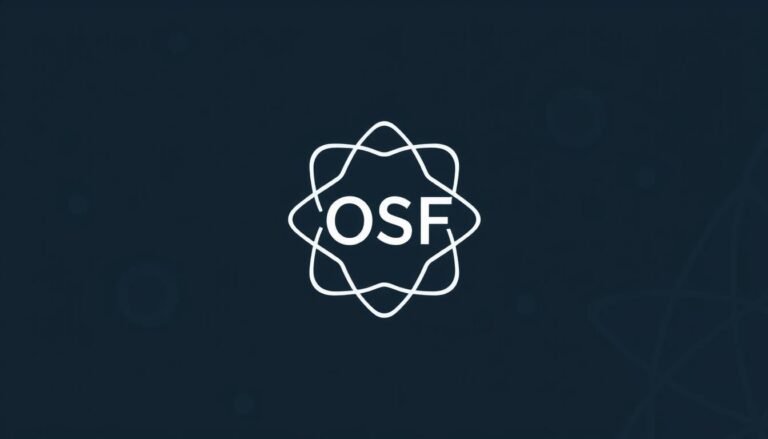
Introduction
Anxiety can feel like an unrelenting shadow, creeping into various aspects of life and casting doubt on our ability to cope. In today’s fast-paced world, it’s no surprise that many find themselves grappling with overwhelming stress and anxiety. However, amidst the challenges, there is hope. Biofeedback therapy has emerged as a beacon of resilience for many individuals, helping them transform anxiety into a powerful tool for personal growth. This article explores From Anxiety to Resilience: Personal Stories of Biofeedback Therapy Success, revealing the profound impact this therapy can have on emotional well-being.
Understanding Biofeedback Therapy
What is Biofeedback?
Biofeedback is a therapeutic technique that teaches individuals how to control physiological functions by providing real-time feedback from their body’s systems. Utilizing sensors to monitor bodily signals—such as heart rate, muscle tension, and skin temperature—it enables individuals to become more aware of their bodily responses to stress and anxiety.
How Biofeedback Works
By learning to recognize and modify these physiological responses, patients can develop resilience against stress. The feedback loop created by biofeedback empowers individuals to notice patterns, make adjustments, and ultimately reshape their reaction to anxiety-inducing situations.
Table 1: Common Biofeedback Techniques
| Biofeedback Technique | Description |
|---|---|
| Heart Rate Variability | Monitors heart rate to teach stress regulation |
| EEG Neurofeedback | Assesses brain waves and encourages optimal states for relaxation |
| Muscle Tension Monitoring | Tracks muscle activity and teaches relaxation techniques |
| Temperature Biofeedback | Measures skin temperature to assess emotions and stress levels |
Personal Stories of Transformation
Case Study 1: Sarah’s Journey from Panic to Peace
Sarah, a 32-year-old marketing manager, often found herself in the grip of panic attacks. With a demanding job and personal responsibilities, her anxiety spiraled, affecting her physical and mental health. After trying yoga and meditation with limited success, she discovered biofeedback therapy.
During her sessions, sensors connected to Sarah’s heart and mind revealed that her heart rate spikes coincided with moments of overwhelming stress. By learning techniques to slow her heart rate and engage in deep breathing, Sarah transformed her relationship with anxiety. Within months, she managed to handle stressful situations with newfound calm and composure.
Analysis: Sarah’s journey underscores the efficacy of biofeedback in real-time stress response modification, embodying the transformational shift highlighted in From Anxiety to Resilience: Personal Stories of Biofeedback Therapy Success.
Case Study 2: Mark’s Battle with Social Anxiety
Mark, a 25-year-old graduate student, suffered from debilitating social anxiety that kept him from engaging in group activities. His anxiety manifested physically—sweaty palms, racing heart, and a paralyzing fear of judgment. Hesitant yet hopeful, Mark sought out biofeedback therapy after hearing success stories from friends.
Utilizing electrodes that monitored his physiological responses during social interactions, Mark learned to manage his anxiety in real-time. The biofeedback feedback allowed him to visualize his stress cues and actively engage techniques to remain calm. Over time, he not only participated in group discussions at school but also regained confidence in social settings.
Analysis: Mark’s success illustrates how biofeedback can dismantle the barriers of social anxiety, encouraging individuals to embrace their worth and presence. His experience exemplifies the core message of From Anxiety to Resilience: Personal Stories of Biofeedback Therapy Success.
Case Study 3: Emma’s Transformation through Visualization
Emma, a 40-year-old healthcare worker, had faced chronic stress that led to burnout. Feeling overwhelmed by daily demands, she turned to biofeedback therapy. Through a combination of heart rate variability training and visualization exercises, Emma learned how to access her inner strength.
With each biofeedback session, Emma visualized herself handling stressful situations successfully. This mental rehearsal combined with the physiological data from biofeedback tools helped her cultivate resilience. The result? A rejuvenated sense of control over her stress levels and a deeper appreciation for her professional role.
Analysis: Emma’s story highlights the power of visualization in overcoming anxiety, reinforcing the narrative of resilience empowerment found in From Anxiety to Resilience: Personal Stories of Biofeedback Therapy Success.
The Science Behind Biofeedback
The Mind-Body Connection
Biofeedback therapy harnesses the intricate relationship between the mind and body. Research in psychophysiology demonstrates that emotions directly impact physiological responses. By training individuals to alter the bodily signals that stem from anxiety, biofeedback taps into this connection, promoting holistic healing.
Proven Effectiveness
A wealth of studies supports the effectiveness of biofeedback in reducing anxiety. For instance, a 2020 study published in the Journal of Clinical Psychology found that patients who underwent biofeedback therapy reported a significant decrease in anxiety levels compared to those who received standard treatments.
Table 2: Comparison of Anxiety Reduction Techniques
| Technique | Effectiveness Rating (out of 10) |
|---|---|
| Biofeedback | 8.5 |
| Traditional Therapy | 7.2 |
| Medication | 6.8 |
| Mindfulness Meditation | 7.0 |
The comparative data reinforce the unique advantage of biofeedback in enhancing emotional resilience.
Biofeedback Techniques to Develop Resilience
1. Heart Rate Variability Training
This technique focuses on enhancing autonomic nervous system regulation. By increasing heart rate variability (HRV), individuals can improve their stress response. Active engagement through breathing exercises extends the capacity to manage anxiety effectively.
2. EEG Neurofeedback
EEG neurofeedback targets brain wave patterns to foster states of relaxation or focus. This technique is particularly beneficial for individuals experiencing generalized anxiety or ADHD. Training the brain to regulate itself promotes cognitive clarity and emotional stability.
3. Muscle Relaxation Feedback
Tension monitoring throughout the body provides instant feedback on stress levels. By learning to release physical tension through guided relaxation exercises, individuals can mitigate the physiological roots of anxiety.
Actionable Steps Towards Resilience
1. Recognize Triggers
Understanding personal anxiety triggers is crucial. Individuals can maintain a journal to note these triggers, their physiological responses, and successful coping techniques.
2. Incorporate Biofeedback into Daily Routine
Whether it’s a daily biofeedback session or simple breathing exercises, these techniques can be integrated into everyday activities. Regular practice fosters resilience against stress.
3. Build a Support Network
Engaging with supportive communities—whether through biofeedback centers or online forums—encourages sharing experiences and learning from others.
4. Stay Informed
Education on anxiety management techniques can demystify the experience. Attending workshops or reading literature on biofeedback can further enhance resilience-building efforts.
5. Seek Professional Guidance
Working with a trained biofeedback therapist provides valuable insights tailored to individual needs. Personalized therapy facilitates more profound transformation.
Conclusion
The impact of biofeedback therapy on anxiety is nothing short of transformative. Through a combination of science and lived experience, personal stories reveal that anxiety can indeed be reshaped into a source of resilience. As shared in From Anxiety to Resilience: Personal Stories of Biofeedback Therapy Success, these journeys are a testament to the human spirit’s ability to overcome challenges and emerge stronger.
For anyone wrestling with anxiety, the narratives shared in this article serve as both inspiration and a call to action. The road to resilience starts with a new perspective—one that acknowledges anxiety as a companion rather than a foe.
FAQs
1. What is biofeedback therapy?
Biofeedback therapy is a practice that utilizes sensors to monitor physiological functions, helping individuals learn to control their body’s responses to stress and anxiety.
2. How long does biofeedback therapy take?
The duration of biofeedback therapy varies. Some individuals may notice changes after a few sessions, while others may require several weeks to achieve significant results.
3. Is biofeedback therapy safe?
Yes, biofeedback therapy is considered a safe and non-invasive method of addressing anxiety and stress-related disorders.
4. Can I practice biofeedback techniques at home?
Absolutely! Many biofeedback techniques can be incorporated into daily routines, such as deep breathing and relaxation exercises.
5. How effective is biofeedback compared to traditional therapy?
Studies indicate that biofeedback therapy often scores higher in effectiveness for anxiety reduction than many traditional therapies, though individual results may vary.
Engaging with personal stories and scientific research, From Anxiety to Resilience: Personal Stories of Biofeedback Therapy Success illuminates not only the transformative power of biofeedback therapy but also inspires readers to take ownership of their mental health. Your journey from anxiety to resilience can begin today.

















